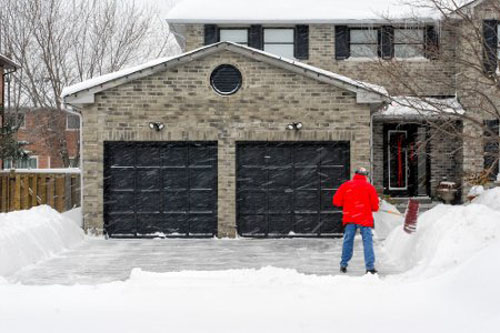
Cracks in Sidewalks:
The cracks are an easy fix. For concrete sidewalks some of the supplies you’ll need include a stiff brush, concrete crack filler and a putty knife. You can find these items at any home improvement store. The crack filler is usually in a caulk-like tube, so make sure you have a caulking gun.
Clean out the cracks with a stiff brush. Rinse with a high pressure water hose, or if you have a compressor blow the area clean. If you are using water pressure, make sure to let the area dry thoroughly before filling with the concrete filler. Squeeze the concrete repair material into the crack and smooth with a putty knife. Please be sure to read all the directions ion the concrete repair material before beginning your project.
Expansion Joints in Sidewalks:
Cracks are not the only things you should maintain on the sidewalk. Expansion joints (the spaces between the sections of sidewalk) will also need maintenance. When sidewalks are first laid, there is a felt-like material that goes in between the joints. This material breaks down after a few years so something needs to fill this area to protect it from freezing and thawing. The items you need for maintaining this area include foam window insulation and liquid tar (in a squeeze bottle).
Prep work for expansion joints is the same as for cracks, but the finishing is very different. Do not use concrete repair filler in this area. Liquid tar is the item of choice here. If the groove is very large or deep it can get expensive to fill it entirely with tar. The alternative is to use window insulating rolled foam. This material can be used as a back filler in the joint. It comes in many different diameters, so measure the width and depth of the groove so you’ll know what size to get.
The joints are easier to do than cracks. All you have to do is push the foam into the cleaned space and then cover it with tar. The foam and tar are flexible enough to take all that winter has to throw at it.
Shifting or Leaning Slabs:
If you notice any leaning, upheaval or shifting of your sidewalk, it is time to call a contractor. They may need to mudjack your sidewalk to make it level again.
Driveways-Blacktop/Concrete:
If you have blacktop, sealing is suggested at least every 2 to 3 years. Temperatures should be above 50 degrees to do this. Get all the grass overgrowth off the edges of the driveway. Sweep with a stiff brush and hose off any leftover dust. Scrub any grease or oil spots with a strong detergent and rinse again. Let it dry thoroughly. Apply a thin coat of sealer with a squeegee. Follow the manufacturer’s directions. Do not walk or drive on the area for at least 24 hours. It may look and feel dry, but resist the urge and wait the full 24 hours. If your driveway is concrete, follow the same procedure as for the cracks in sidewalks.
Gravel Driveways:
What about gravel driveways? The biggest problem with gravel is that most of it ends up in the lawn by spring. A remedy for that is to leave the first snowfall on the driveway and use your car to pack down the snow. The packed down snow will hold all that gravel in place.
Now you can take care of the next snow fall by either blowing or plowing without throwing all the gravel into the lawn. Annual tasks aren’t all that difficult, and doing them maintains the value of your property. Simple maintenance of sidewalks and driveways could save you costly repairs down the road.
